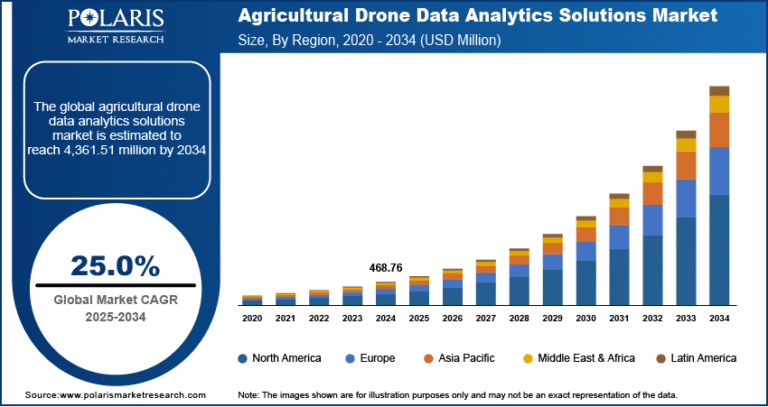Smart Antenna Market Projected to Reach USD 59.4 Billion by 2034, Growing at a CAGR of 16.90%

The global smart antenna market was valued at USD 12.8 billion in 2024 and is expected to grow at a CAGR of 16.90% from 2025 to 2034, driven by the surge in mobile data traffic and the increasing demand for enhanced wireless communication performance.
Market Definition
The smart antenna market includes advanced antenna systems that use signal processing algorithms to automatically adapt and optimize wireless signal transmission and reception. These antennas enhance communication performance by focusing signals toward intended users and minimizing interference. Widely used in applications such as mobile networks, Wi-Fi systems, and defense communication, smart antennas play a crucial role in improving data throughput, coverage, and spectral efficiency. As wireless communication demands grow, especially with the expansion of 5G and IoT technologies, the smart antenna market is experiencing significant growth.
Key Findings and Essential Insights
· In 2024, North America accounted for the highest revenue share in the global Smart Antenna Market.
· Based on By Technology Outlook, the SIMO (Single Input Multiple Output) is expected to gain significant traction over the forecast period.
Market Overview: Key Figures at a Glance
Market Size Value in 2024 – USD 12.8 billion
Market Size Value in 2025 – USD 14.96 billion
Revenue Forecast in 2034 – USD 59.4 billion
CAGR – 16.90% from 2025 – 2034
Get access to the full report or request a complimentary sample for in-depth analysis:
https://www.polarismarketresearch.com/industry-analysis/smart-antenna-market/request-for-sample
Market Growth Drivers
1. Rising Demand for High-Speed Wireless Communication
The explosive growth in data consumption due to streaming services, cloud applications, and mobile broadband is driving the need for high-speed, reliable wireless connectivity. Smart antennas, particularly Multiple-Input Multiple-Output (MIMO) systems, significantly enhance data throughput and signal quality, making them essential in 4G, 5G, and upcoming 6G networks.
2. Deployment of 5G Networks
With the global rollout of 5G infrastructure, smart antennas have become indispensable. Massive MIMO and beamforming technologies enable enhanced spectrum efficiency, low latency, and increased capacity, all of which are critical to 5G performance. Countries like the U.S., China, and South Korea are investing heavily in smart antenna technologies to meet the demands of ultra-fast and low-latency wireless communication.
3. Growing Adoption in Automotive and IoT Applications
Smart antennas are increasingly used in connected vehicles, autonomous driving, and Internet of Things (IoT) applications to ensure seamless, high-speed communication. Applications such as vehicle-to-everything (V2X), fleet management, and smart home systems rely on smart antenna technology to maintain robust and uninterrupted connectivity.
4. Increasing Demand for Enhanced Coverage and Capacity
Network operators are deploying smart antennas to overcome limitations of traditional antennas in dense urban environments, stadiums, and high-rise buildings. Beam steering and spatial diversity offered by smart antennas help improve signal coverage and minimize interference, which is crucial for quality of service (QoS) and customer satisfaction.
5. Advancements in Wireless Standards and Technologies
Ongoing innovations in wireless communication standards like Wi-Fi 6/6E, LTE-Advanced, and 6G research are spurring the adoption of smart antennas. These advancements necessitate hardware that can dynamically adapt to channel conditions, user mobility, and interference—capabilities inherent in smart antenna systems.
6. Military and Aerospace Communication Needs
Smart antennas are also gaining traction in defense and aerospace for applications like radar systems, satellite communication, and electronic warfare. Their ability to dynamically adjust signal direction and mitigate jamming is critical in mission-critical operations and secure communications.
Market Key Players
The competitive landscape features a mix of long-standing companies and emerging contenders. Leading players are actively pursuing R&D initiatives and strategic moves to strengthen their market position. Notable participants include
- Airgain Inc.
- Amphenol Corporation
- Broadcom Limited
- Galtronics USA Ltd.
- Intel Corporation
- Linx Technologies
- Molex LLC
- Qualcomm Technologies, Inc.
- Sierra Wireless
- Sunway Communication






